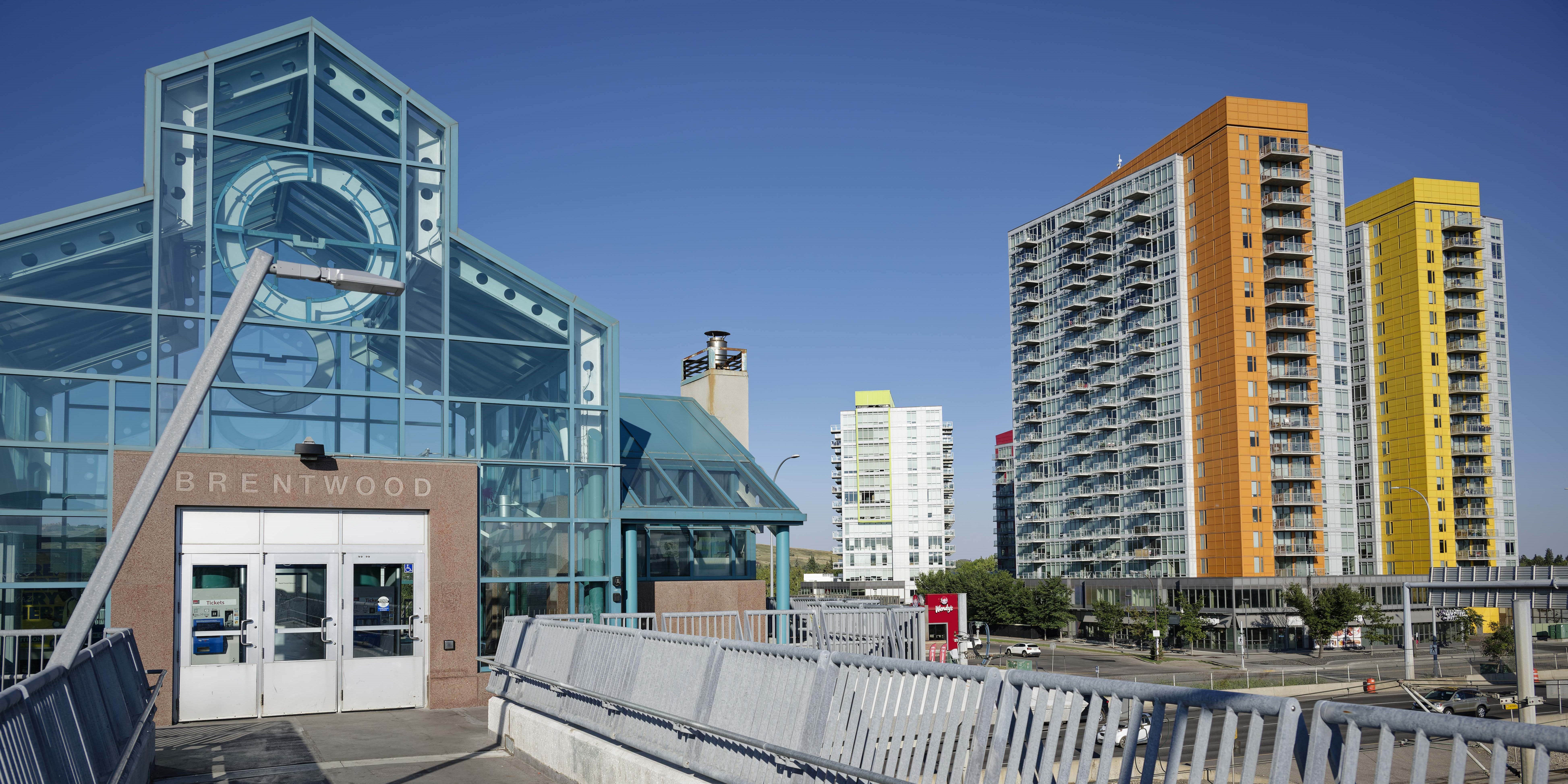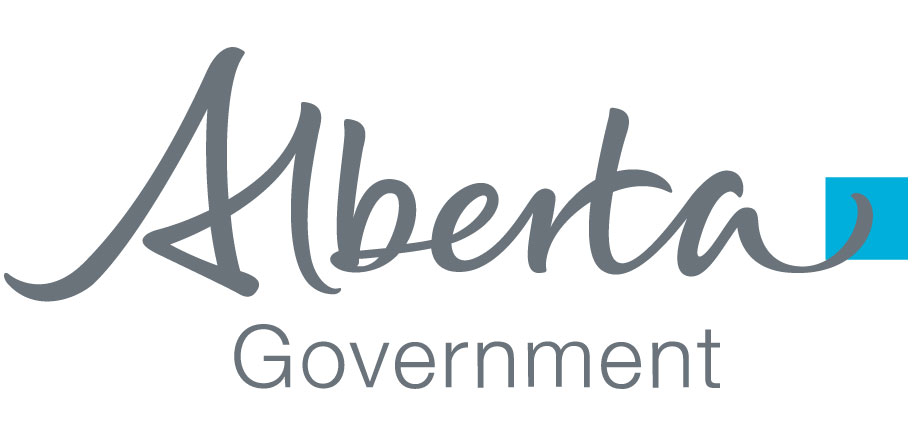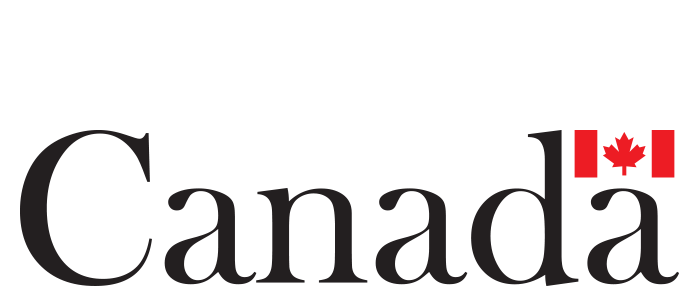Transit-Oriented Development
Transit-oriented development around Brentwood LRT station includes residential buildings, retail stores, restaurants and services.
What is Transit-oriented development (TOD)?
Transit-oriented development (TOD) is the planning, design and building of development centered around rapid transit stations.
A key benefit of the Green Line LRT is creating high quality transit connections between communities and areas targeted for development in southeast Calgary. Projects like the Green Line LRT can be a stimulus for increased development, by increasing the total volume of development, or accelerating new development along the route.
Development near rapid transit stations often incorporates amenities including restaurants, shops, offices, parks and entertainment within walking distance. This enhances the overall quality of life by providing easy access to destinations, local shops and businesses and community spaces to connect with others.
Benefits of TOD
- Lower costs of living.
- Better access to jobs, recreation and education.
- More mobility and lifestyle choices.
- Healthier lifestyles (TOD promotes walking, cycling and transit use).
- Healthy and thriving communities.
- Local economic growth in communities.
- Less greenhouse gas emissions through less automobile use.
Developing around Calgary’s rapid transit hubs
The City’s Municipal Development Plan (MDP) outlines the long-term growth plans for Calgary, which includes a focus on growing mixed-use, amenity rich communities with access to rapid transit.
The Green Line LRT stations and infrastructure are being designed to integrate into the community and support longer term regeneration. Developing the areas around future stations will be a collective effort between The City, private sector developers and interested parties.

Planning for Transit-Oriented Development
Extensive research was completed on development potential for Green Line stations. Transit-oriented development scoping and planning was conducted with Green Line’s pre-design process and community-based visioning.
Market analysis studies between 2014 and 2016 identified areas with the highest development potential. They focused on areas that could have multi-family developments and complete transit-oriented development by 2045.
Locations for future transit-oriented development along the Green Line were prioritized based on:
- Input from community members, developers and subject matter experts)
- Long-term development plans
- Geospatial data
- Market analysis studies
The Transit-oriented development (TOD) Implementation Strategy, approved by Calgary City Council in 2019, proposed a four-part action plan that included completion of a station areas evaluation.
Details on the strategy and how The City is working through those priorities can be viewed on the Transit-oriented development (TOD) Program page.
Four-layer planning approach
The Green Line LRT was planned with a four-layer approach to ensure the proper investments are in place to support plans 50 years into the future.
Layer 1 and some items in Layer 2 will be delivered in Phase 1 construction. Layers 3 and 4 are part of a long-term vision for Calgary. They will take years to build out and require collaboration with other City departments, external partners, industry and the public.
Layer 1 - Transit Infrastructure
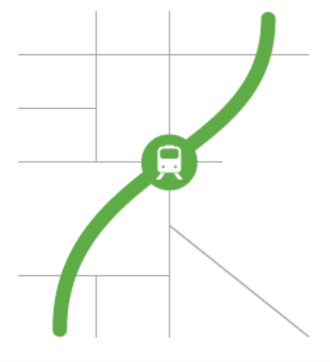
This layer plans for all the pieces required to operate the Green Line LRT. This includes:
- LRT track
- Transit stations
- Tunnels and bridges
- Light rail vehicles (LRVs)
- Overhead contact system (electrical and power structures)
- Station and passenger facilities (e.g. Park and Ride, passenger shelters, bicycle parking, bus terminals)
- Maintenance and Storage Facility (located at Highfield Station)
These items will be delivered in Phase 1 and will help lay the foundation for the other layers.
Layer 2 - Connection to Stations
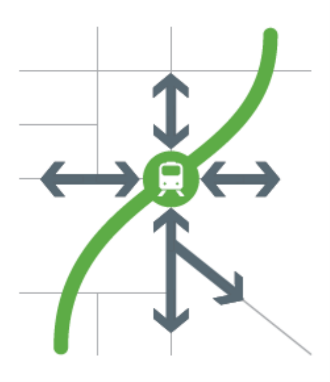
This layer plans for key infrastructure details around station areas. This includes:
- Improvements to pedestrian safety (pedestrian bridges, sidewalks, etc.).
- New multi-use pathways for pedestrians, cyclists, scooters and more to connect from where they live, work and play to Green Line stations.
- Support for alternative transportation modes to access the station (bike share, car share, e-scooters, etc.).
Some of these items will be delivered in Phase 1 and will help prepare for other layers.
Layer 3 - Transit-Oriented Development (TOD)
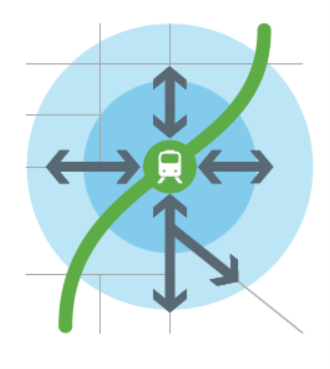
Transit-oriented development (TOD) is the planning, design and development of communities centred around rapid transit stations. It typically includes:
- Designs to encourage walking, cycling and transit use.
- Easy pedestrian connections to various destinations.
- A variety of residences, shops and services.
- Multi-story buildings for residents and businesses.
- Reduced need for high automobile use.
These items are part of a long-term vision for Calgary and will take time to build out.
Layer 4 - City Shaping
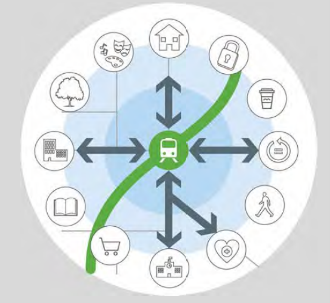
City shaping plans for the look, feel and function of our city. This layer looks at how the Green Line can be leveraged and transform communities 50 years into the future. The goals of the City Shaping Framework for communities along the Green Line are:
- Equitable and inclusive: affordable access to housing, transit, social and community services.
- Vibrant and thriving: access to cultural destinations, local spaces that foster cultural activities, and a connection to Calgary’s heritage.
- Safe and resilient: safe, protected and prepared.
- Healthy and active: physically active, good mental health and quality natural environments.
These items are a long-term vision and will take time to build out. Thinking about them now allows us to make sure future development is possible.

